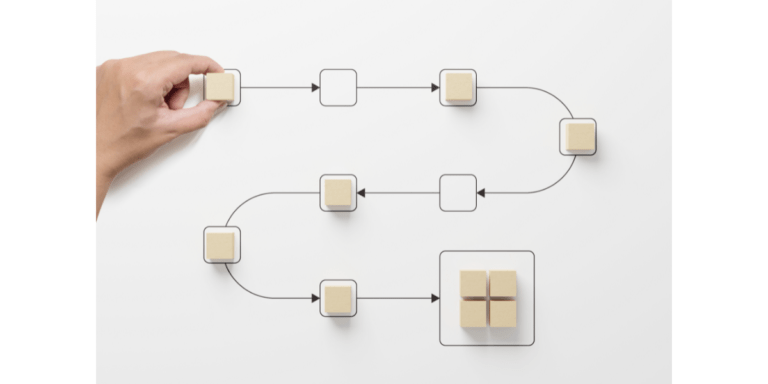Strategies for Improving Employee Performance
In today’s competitive business landscape, every edge counts. We all understand the profound impact that a motivated, efficient workforce can have on our business’s bottom line.
As we navigate the ever-evolving dynamics of the corporate world, ensuring that our employees perform at their best becomes paramount.

But how do you ensure your team is always in peak form as a business owner or manager?
This article will dive deep into proven strategies that can elevate workforce efficiency, transforming not just numbers but the very culture of your organization.
The Correlation between Employee Satisfaction and Productivity
Imagine a workplace where every individual wakes up eager to contribute, where job satisfaction is not just a buzzword but a tangible reality. Excitement is in the air! That’s the power of employee satisfaction. Research and data consistently show a strong link between employees’ well-being and productivity.
By understanding and addressing our employees’ specific needs and aspirations, we can create an environment where excellence is not an expectation but a norm.
Studies back this up and share insights on fostering a contented and, consequently, more efficient workforce.
Leveraging Technology for Improved Efficiency
Can we afford to be left behind in an age of technology reshaping industries and defining new norms? The right digital tools and platforms can be game-changers in monitoring and enhancing employee performance.
- Workflow Automation: Time-consuming, repetitive tasks can drain employee morale and reduce efficiency. Automating such tasks lets your team focus on more strategic and impactful aspects of their roles.
- Real-time Collaboration Tools: In the era of remote working and global teams, collaboration tools like video conferencing, shared documents, and instant messaging can bridge the communication gap, ensuring everyone is on the same page.
- Performance Tracking Software: With the right tools, you can track performance metrics, identify areas for improvement, and offer targeted training or resources. This data-driven approach ensures that interventions are timely and effective.
- Training Platforms and E-learning: Embrace platforms that offer online courses, webinars, and training modules. It provides flexibility for your employees and ensures they have the latest knowledge and skills in their respective fields.
Importance of Continuous Training and Development
Standing still in the rapidly changing business world is the same as moving backward and will render your organization left behind. As business leaders, we must recognize that the skills and knowledge of yesterday might not necessarily meet the demands of tomorrow.
But how can you ensure your team is always ahead of the curve? The answer lies in continuous training and development.
By investing in regular skill-enhancing programs, we empower our employees to face new challenges head-on, ensuring that our business remains relevant and competitive.
Together, let’s delve into the transformative power of consistent learning and how you can integrate it into your organization’s ethos.
Harnessing the Power of Effective HR Strategies
The heartbeat of any successful organization lies in its human resources. With an ever-increasing emphasis on employee well-being, the role of HR has evolved from mere management to being a strategic business partner.
Do you often wonder how you can make your HR practices more impactful? We believe that by adopting innovative HR strategies, you can enhance your workforce’s efficiency and create a culture of growth and innovation.
We need the latest HR trends and tools to redefine how you engage with and uplift your team.
Employee Productivity Enhancement Techniques
There’s a magic formula to maximizing the potential of every individual on your team. While it’s not one-size-fits-all, certain universal techniques can make a significant difference.
Are you interested in enhancing your team’s efficiency without adding unnecessary pressures? We’ve got you covered.
- Setting Clear Expectations and Goals: Clarity is the precursor to success. When employees know their expectations, they can focus themselves in the right direction. By defining roles and setting measurable goals, we can provide a roadmap for success that each team member can follow.
- Promoting a Positive Work Environment: A harmonious, inclusive environment isn’t just about comfort—it’s directly linked to productivity. Encourage open communication, celebrate diversity, and cultivate a sense of community to ensure your employees feel valued and motivated.
- Recognizing and Rewarding Efforts: Regular recognition and appreciation can work wonders. Whether through monetary bonuses, extra time off, or simple verbal acknowledgment, recognizing your employees’ hard work can boost morale and enhance overall productivity.
Open Communication Channels
Effective communication is the cornerstone of a harmonious and efficient workplace. When you foster open communication channels, you create an environment where ideas flow freely, problems are solved collaboratively, and feedback is used for improvement.
Feedback is a two-way street. Encourage a culture of ongoing feedback, where you and your team members can exchange insights and suggestions regularly.
It helps identify areas for improvement and strengthens the sense of belonging and mutual trust.
As leaders, we play a pivotal role in facilitating communication. Ensure that you are visible, accessible and approachable for your team. Actively listen to their concerns, provide guidance, and offer support when needed.
A supportive manager can significantly enhance employee morale and productivity.
Cultivating a Growth Mindset Among Employees
The mindset of your team members can greatly influence their performance. When employees adopt a growth mindset, they are more likely to learn from failures and continuously seek improvement.
As leaders, we can nurture this mindset within our organizations.
Understanding the Growth vs. Fixed Mindset
Educate yourself and your team about the growth mindset vs. a fixed mindset. A growth-mindset believes in the potential for development and sees challenges as opportunities, while a fixed mindset often resists change and avoids challenges. Check out Mindset by Carol Dweck, and additional resources related to Mindset.
Techniques to Promote a Culture of Learning and Adaptability
Implement strategies that encourage learning and adaptability. It can include providing opportunities for skill development, offering mentorship programs, and promoting a culture where taking calculated risks is encouraged.
Celebrating Failures as Learning Opportunities
In a growth-oriented environment, mistakes are not seen as failures but steppingstones to improvement. Encourage your team to reflect on their failures, extract valuable lessons, and apply them to future endeavors.
Doing so creates a workplace where innovation and growth are celebrated.
Conclusion
In the journey to boost workforce efficiency and improve employee performance, we’ve explored many strategies and techniques that can transform your organization from within. It’s not just about the numbers – it’s about nurturing a culture of growth, collaboration, and well-being.
As business leaders, we must recognize that the path to excellence is ongoing. The workplace is evolving, and so are the expectations and aspirations of our team members.
By prioritizing employee satisfaction, investing in continuous training, leveraging technology, and fostering open communication, we lay the foundation for a workforce that meets and exceeds expectations, and thereby allowing the business to enjoy greater results!





